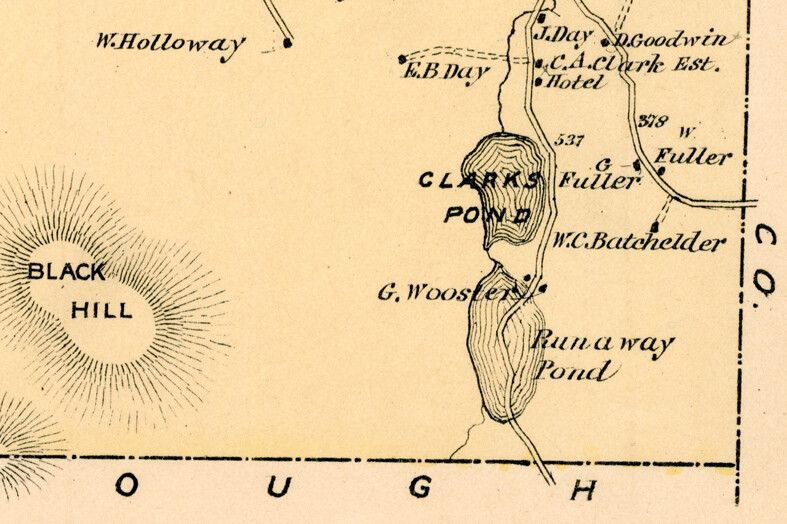Runaway Pond
How did Long Pond run away? And where did it go?
In the spring of 1810, there was little rain. The streams that ran the grist mills(machines for grinding grain into flour) and saw mills(machines for cutting wood into boards) did not have enough water. Aaron Wilson, a miller in Glover, needed more water to run his mill. He decided to try to move some water from Long Pond to Mud Pond.
On June 6, Wilson and his neighbors dug a channel between the two ponds. The water started flowing from Long Pond down towards Mud Pond. But there was a problem. The water never stopped.
All of the water in Long Pond started a flood that was headed straight for Wilson's mill where his wife was working. Spencer Chamberlain, a fast runner, ran all the way to Wilson’s mill and warned Mrs. Wilson just in time.
The water, along with trees and dirt and rocks, kept flowing until it reached Lake Memphremagog. Long Pond never filled up again, not after the day the pond ran away.
Thinking About History
Historians ask questions to think deeply about history.
What happened when the people in Glover tried to change their environment?
What would you do if you didn't have enough water to run your mill?
Learn More
Follow the links below to explore related topics.
Look at a map of Long Lake. How did the elevation of Long Lake help it drain of water and run away?
Read The Day the Pond Ran Away article from Green Mountaineer Magazine
Watch the video Runaway Pond from This Place in History
Copy and paste this citation to show where you did your research.
Vermont Historical Society. "Runaway Pond." Vermont History Explorer. Accessed December 11, 2025. https://sitemap.vermonthistoryexplorer.org/runaway-pond
